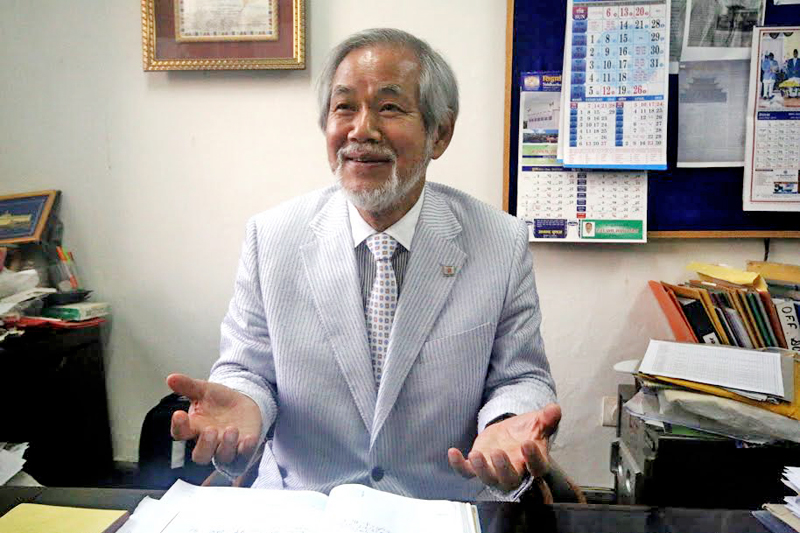Come to Lumbini for peace Tokusin
Bhairahawa, May 24
It was about 26 years ago that Japanese national Tokusin Norbu Kasai visited Lumbini for the first time.
Tokusin then prayed and made a solemn promise on the premises of Mayadevi temple that he would give himself to the service of the holy place if he got rid of the chronic heart disease he was suffering from for long.
He was cured. Now in his seventies, Lumbini is the only reason he lives for.
There was hardly any standard hotel in Lumbini back then. But slowly with more Japanese nationals arriving over the years, Tokusin got the idea of opening a standard hotel at the religious site for visiting tourists and running it purely with a non-profit motive.
Lumbini Hotel Kasai, opened by Tokusin is the only start hotel in the Lumbini area till date, set up with permission of the Tourism Department of the government of Nepal.
The hotel, which has been operating for quite some years now has been providing free meals to around 3,000 commoners on the occasion of Buddha Jayanti ever year for the past 11 years.
“As feeding Buddhist monks and the commoners on the auspicious day is a holy deed, I’ve so far fed over 50,000 persons and am planning to peg the number to 4000 from next year,” said Tokusin, who said all the income from the hotel goes into the development and promotion of Lumbini.
Further, the 2014 goodwill ambassador for the international promotion of Lumbini shared his wish to build a museum at the Buddhist religious site. “I have a wish to make a small museum here, but for that I need cooperation of the Lumbini Development Fund and its help in making land for the museum available,” said the septuagenarian.
Besides, he revealed his dream to put up life size statues of the then United Nations general secretary U Thant and Professor Kenjo Tange, the latter had devised the master plan for the development of Lumbini.
“We’re ready to realise this dream but again we need the support of the Nepal government and the LDF,”he said.
“I was a diseased person. I got rebirth so to speak, only due to the grace of the lord. So I’ve no other motive in my life except to serve the lord and this holy place for the rest of my life,” said Tokusin, who is conceded about the decline in the number of the Japanese tourists to Lumbini in recent years.
“The number of Japanese tourists has dropped now, but I’m hopeful that the number will increase once the construction of the airport (Gautam Buddha International Airport) is completed and there is a direct flight between Bhairahawa and Japan,” he said.
According to Tokusin, many people in Japan are unaware about the birthplace of Lord Buddha. “Japan has a total population of 126.3 million as per the latest census, but more than 20 per cent of the people don’t know about Lumbini and where Lord Buddha was born,” he said, stressing the need of publicity about the Buddhist shrine in Buddhist countries around the globe.
“It is not only in Japan but in all Buddhist countries that the government of Nepal should carry out publicity campaigns about Lumbini,” argued the Japanese national, dwelling on his initiatives to make Lumbini a common centre of the different sects of Buddhism in Japan.
“There are many types of Buddhists and they have their own temples in Japan. So I plan to develop Lumbini as a common centre of faith for all the sects of Japanese Buddhists,” he shared.
Further identifying the need to develop necessary infrastructure in Lumbini, Tokusin also pledged support to the development of Tilaurakot in Kapilvastu and other Buddhist sites, Ramgram Stupa site and Devadahasthal.
“As nothing is done if we take stabs at many a thing at one go, I’m planning to involve myself in the overall development in Lumbini in a steady but gradual pace,” said Tokusin, who called on Buddhists around the globe to visit Lumbini at least once in their
lifetime. “There is no place like this in the whole world. Come here for peace and you’ll get to feel what I’ve felt by coming here,” appealed the Japanese national, hoping that more people will visit the Buddhist religious site in the days to come.






